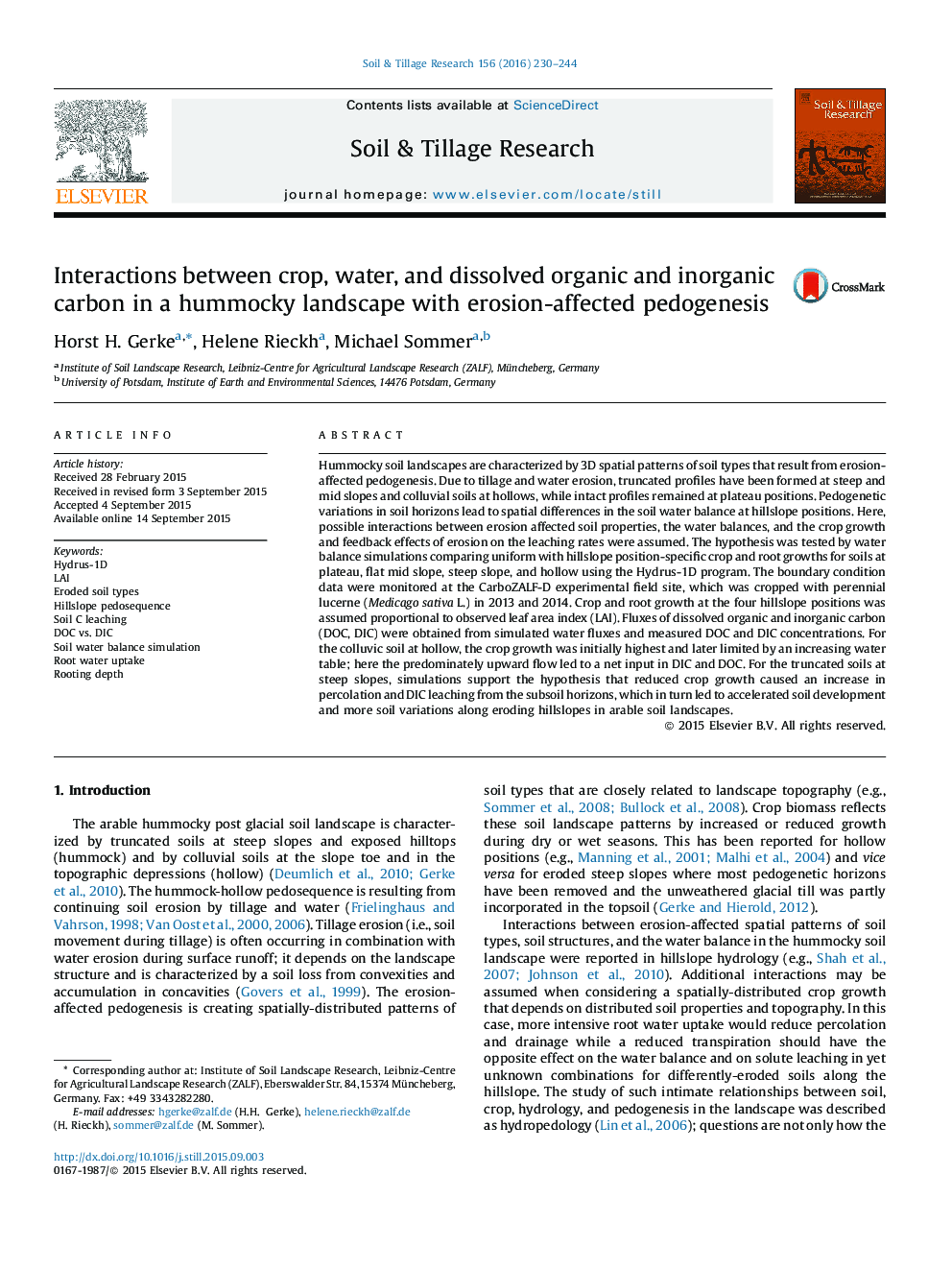| کد مقاله | کد نشریه | سال انتشار | مقاله انگلیسی | نسخه تمام متن |
|---|---|---|---|---|
| 305407 | 513027 | 2016 | 15 صفحه PDF | دانلود رایگان |
• Simulations of crop-dependent water balances at four slope positions.
• Leaf area index of lucerne as proxy for root and crop development.
• No effects for Luvisols at plateau and flat mid slope position.
• Capillary rise of water in colluvial soil of hollows by hillslope hydrology effects.
• Less crop growth at steep slope increased percolation and leaching.
Hummocky soil landscapes are characterized by 3D spatial patterns of soil types that result from erosion-affected pedogenesis. Due to tillage and water erosion, truncated profiles have been formed at steep and mid slopes and colluvial soils at hollows, while intact profiles remained at plateau positions. Pedogenetic variations in soil horizons lead to spatial differences in the soil water balance at hillslope positions. Here, possible interactions between erosion affected soil properties, the water balances, and the crop growth and feedback effects of erosion on the leaching rates were assumed. The hypothesis was tested by water balance simulations comparing uniform with hillslope position-specific crop and root growths for soils at plateau, flat mid slope, steep slope, and hollow using the Hydrus-1D program. The boundary condition data were monitored at the CarboZALF-D experimental field site, which was cropped with perennial lucerne (Medicago sativa L.) in 2013 and 2014. Crop and root growth at the four hillslope positions was assumed proportional to observed leaf area index (LAI). Fluxes of dissolved organic and inorganic carbon (DOC, DIC) were obtained from simulated water fluxes and measured DOC and DIC concentrations. For the colluvic soil at hollow, the crop growth was initially highest and later limited by an increasing water table; here the predominately upward flow led to a net input in DIC and DOC. For the truncated soils at steep slopes, simulations support the hypothesis that reduced crop growth caused an increase in percolation and DIC leaching from the subsoil horizons, which in turn led to accelerated soil development and more soil variations along eroding hillslopes in arable soil landscapes.
Journal: Soil and Tillage Research - Volume 156, March 2016, Pages 230–244
